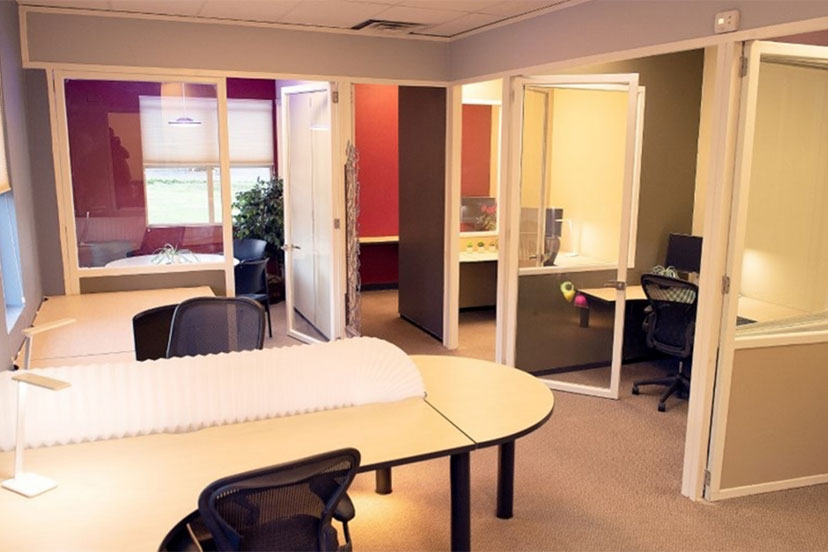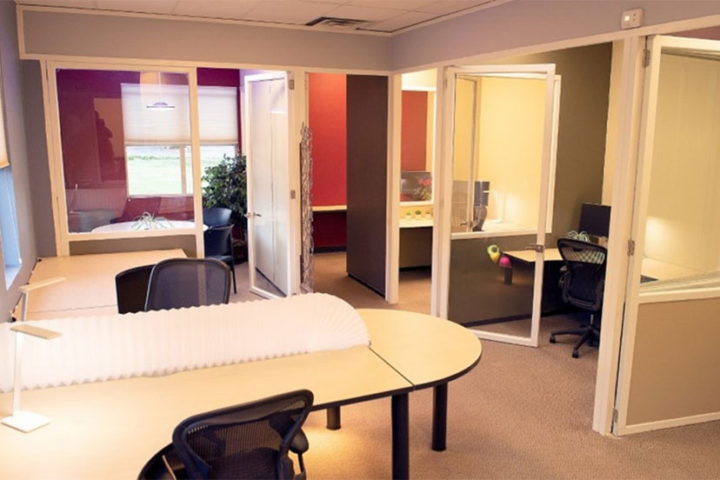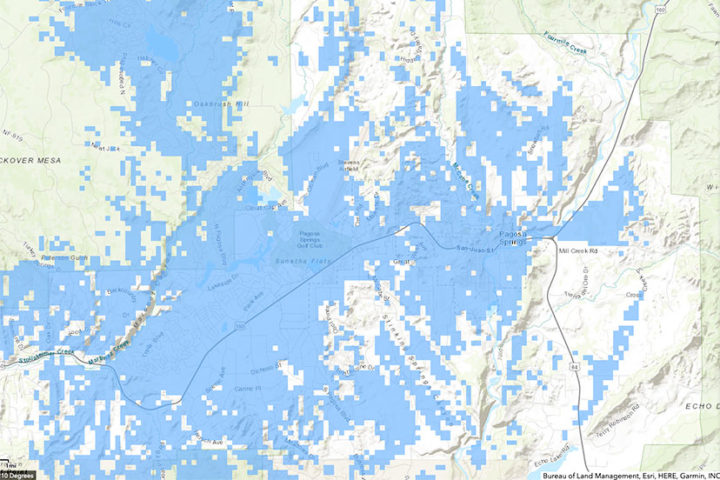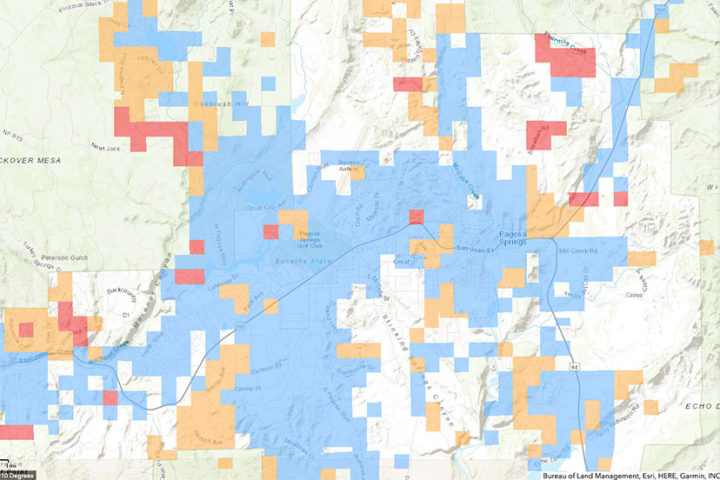“I think maybe there’s a desire, in a rural place like [Pagosa] where people are really spread out, that — while there is a beauty in working independently, working in your pajamas at home — but there’s just a natural human need to gather. And also to meet other, similar professionals who are remote workers, tech workers, education workers. I think those kinds of knowledge workers really like to have the chance to meet one another, here in Pagosa.
“So there’s a little bit of that ‘cross-pollinating’ going on in the office…”
Daewn Kolpin, one of the founders of the Pagosa Innovation Center, had agreed to an interview, to talk about the first year of business at PIC — a year that coincided with a year of pandemic changes. More people working ‘remotely’, for example. When public health agencies across the nation limited the number of people who could safely occupy indoor spaces, a lot of people — teachers, bookkeepers, programmers, graphic designers, parents, doctors, and a plethora of other professionals and non-professionals — began to work “from home” in ways they might not have done absent the health emergency.
PIC opened its doors in August 2020, just as a spike in infections was making its appearance in Archuleta County and neighboring La Plata County.
Also making their appearance, during the COVID summer of 2020, were record numbers of visitors… including tourists, home buyers, and ‘knowledge workers’.
“So we opened our doors in August. Within the first three weeks of turning on the marketing engine and letting people know we were here, and ready to book space, the office manager wanted us to turn off the booking engine, because it was like wildfire; it was just booking so fast.
“I think what happens: people come to Pagosa from these bigger cities, and they assume they can work from anywhere. Then they realize that the internet here is very ‘subpar’ across the area, and it’s difficult to sustain. So the Pagosa Innovation Center is like a magnet — with the fastest, most reliable internet speed. So people can maintain this dream of a life out here, and can continue to make a salary and keep their job while living out here.”
According to the Colorado Broadband Office — a project of the Governor’s Office of Information Technology — folks working from home have a couple of local internet options. The first map shows the approximate coverage provided by Visionary Broadband. (Disclosure: Visionary advertises with the Pagosa Daily Post.) The areas shown in blue are reportedly capable of providing at least 25 Mbps download speeds, through its ‘fixed wireless’ network.
The next map shows the approximate areas served by ‘wired’ internet, which includes CenturyLink telephone wire, and USA Communications cable TV wire. The blue areas are reportedly capable of delivering at least 25 Mbps. In the orange areas the speeds average 10-25 Mbps, and in the red areas, the top speeds fall below 10 Mbps.
Those of us experienced with internet in Pagosa Springs understand that “25 Mbps” actually means “occasional speeds of 25 Mbps.”
One of the attractions of the Pagosa Innovation Center, as noted previously, is a fiber connection capable of up to 1,000 Mbps. That is, 1 Gig. (If the co-working space were full of people all streaming video at the same time, each chair would be sharing the same 1 Gig connection — so the actual speeds might be closer to 100 Mbps, for each user.)
But faster internet is not the only advantage to a co-working space.
Here’s Ms. Kolpin again:
“But then, as COVID started to spike in our little rural area — pretty much, we saw that spike about a week or two after Halloween, after people were gathering in large groups, bored of lock-down — we suddenly saw this big spike in the late autumn, kind of when flu season starts hitting anyway. So then we had to reduce our inventory. We decided, as a team, that none of the [staff] were going to be able to work in the Innovation Center. We would just keep the spaces open for the people that really do need it.
“For a while, it was limited to about one person at a time, coming into the office. But we wanted to keep the doors open, and we wanted to try — and sometimes a person would only need the office for a one-hour meeting.
“But now the doors are back open… and it seems to be, not just a place to park and rent a desk… there does seem to be some cross-pollinating, local people who need a faster internet meeting people from out of town. And a really fun, community-building energy is happening. Recommendations are getting shared.
‘Who can recommend a baby-sitter?’
‘Who can recommend a landscape person?’
‘I just bought a house here — who can recommend a plumber?’
“It would be really great if we had a broader skill base here. There are virtual jobs available through a ‘virtual job fair’ that we participated in a couple of months ago. 400 virtual jobs, available to the southwest corner of Colorado. And it’s great. These are high-paying jobs; exactly what we want — knowledge workers. But currently, there’s a huge gap between the available virtual jobs to this area… and with the COVID-era of remote working, and how it’s forced everyone to just become a lot more comfortable with remote working… and the gap is with the actual skill base within the region. Not a lot of platform skills yet, technical skills yet. We’re just so far behind, we couldn’t place those jobs even if we wanted to…”
Will PIC take that bull by the horns, and start offering job training in various computer platforms?
“We hope to be. But I think right now, the most important service we can provide, within our small footprint — it’s a 700 square foot space — is as ‘connectors’. And that’s in our mission statement as well. We are hoping to be the facilitators and the connectors.”
While other agencies, schools and organizations are offering tech training in the region — and virtually, in fact, from most anywhere in the world — PIC sees their main job as “connecting people to resources”.
“What we’re trying to do is just stay relevant, and stay nimble, and really be relevant for our target audience of knowledge workers…”




